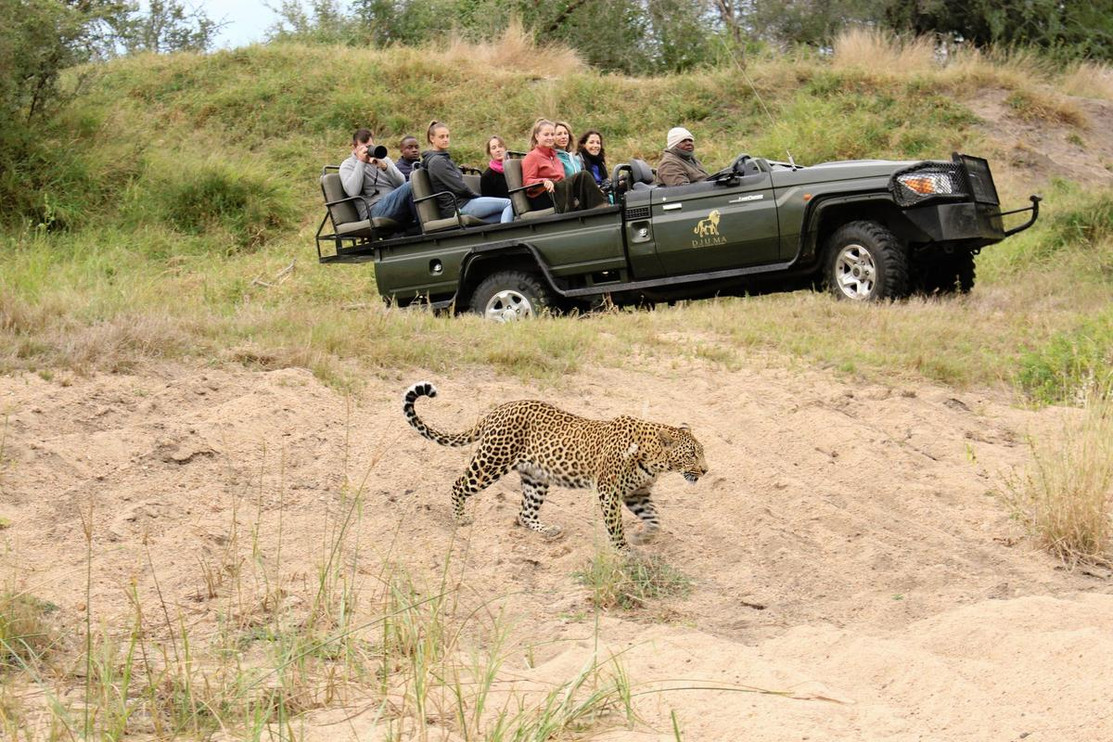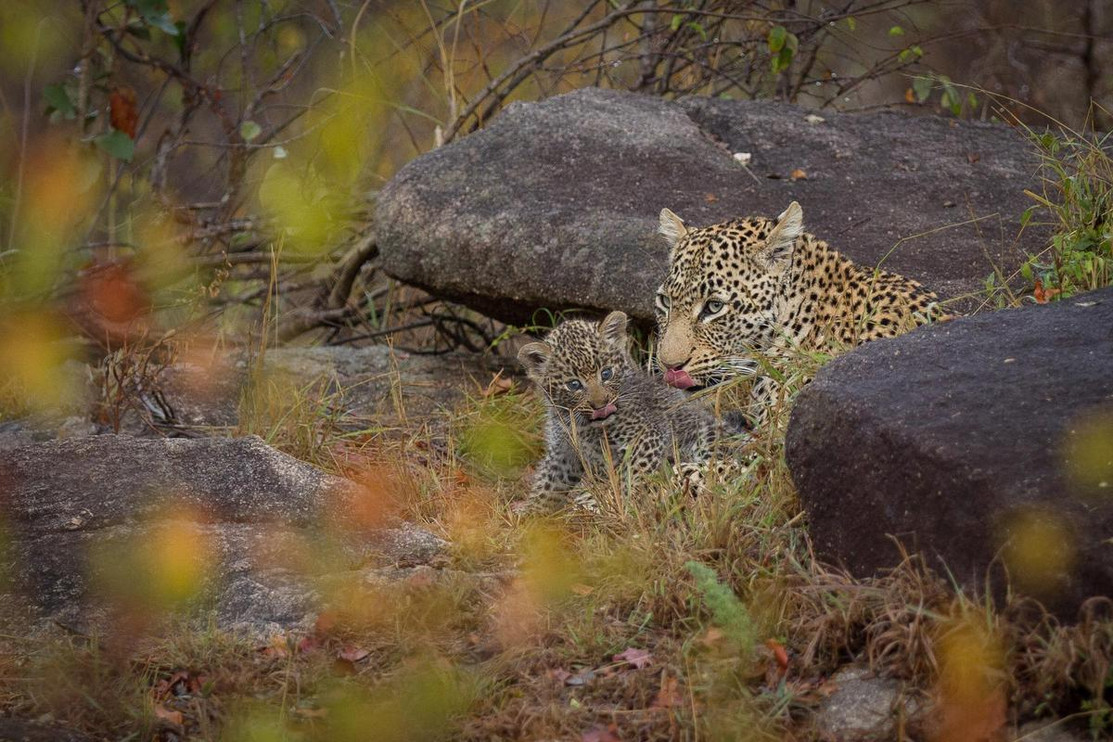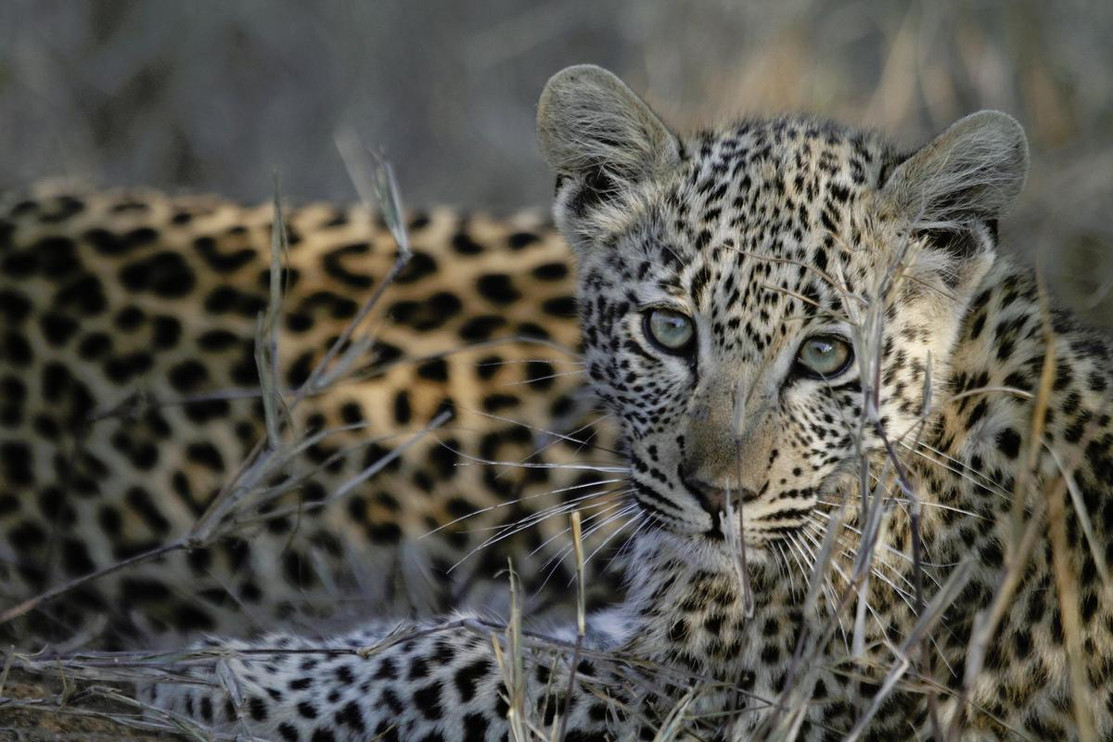Leopards Are Vanishing
Leopards once had the most extensive distribution of any big cat. The species has since vanished from at least two-thirds of its historic range in Africa and 84 percent of its historic territory in Eurasia. Extinct in 13 countries and possibly extinct in seven more, leopard populations have been devastated by illegal killing for their skins and other body parts, conflict with local people and poorly managed trophy hunting. They are also highly elusive, making them one of the most challenging big cats for scientists to understand and protect.

Ecotourism sightings produce information that can influence wildlife management and research. © Gareth Whittington-Jones/Panthera
Comprehensive Leopard Research
Panthera’s Sabi Sands Leopard Project has become critical in the struggle to save leopards, likely the most persecuted big cat. As the lengthiest and most comprehensive leopard research study ever undertaken, Panthera’s Sabi Sands Leopard Project encompasses three private reserves (the Sabi Sand Nature Reserve, Mala Mala Game Reserve and Sabie Game Reserve) in South Africa. Since 2009, Panthera researchers have studied, monitored and gained a better understanding of leopard behavior using this unique population..
Due to well-protected environment and sensitive viewing practices, leopards in the reserve have become comfortable around vehicles. Because of this, leopard sightings are frequent and safari guides can identify and monitor up to 85 resident leopards using their unique spots and established territories. Panthera has trained safari guides to act as citizen scientists, using their photo-tourism sightings as biological data that ultimately inform the conservation of at-risk leopard populations in other regions.

To assign maternity, we collect photographs of female leopards with their cubs and then match adult leopards to their pictures as cubs using their unique spot patterns. © Helen Young
Using DNA Technology to Protect Leopards
Using recent advances in DNA technology, the leopard life histories collected in the Sabi Sands can be augmented with individual genetic profiles. Researchers are able to collect scat from known leopards and use these samples to extract DNA. Genetic profiling of leopards assists with understanding relatedness, paternity and reproductive success. At a national scale, we use DNA to help combat the poaching of leopards for the illegal wildlife trade. The genetic profile of a confiscated leopard skin can be matched to the genetic ‘signature’ of its original population, identifying leopard poaching hotspots.
Long-Term Research Can Lead to Long-Term Impact
Sabi Sands hosts one of the world’s best-protected and best-studied leopard populations. We have life histories for over 800 leopards in the Sabi Sands since 1979 and detailed records of more than 500 litters of cubs. Over 110,000 unique leopard sightings have been submitted since 2003 and approximately 8000 new observations are added annually. Consequently, this population demonstrates how leopard numbers change, healthy demographic composition and spatial organization. These data can be used to answer ecological, behavioral and management questions and inform conservation at other sites where leopards are under threat.
Ultimately, as the patterns and processes governing wildlife population trends are only detectable over many years and generations, long-term research is critical to understanding and conserving species at a global scale.

This cub in the Sabi Sands Game Reserve is among the world’s best-studied leopards. © Panthera
Read More About the Sabi Sands Leopard Project:





